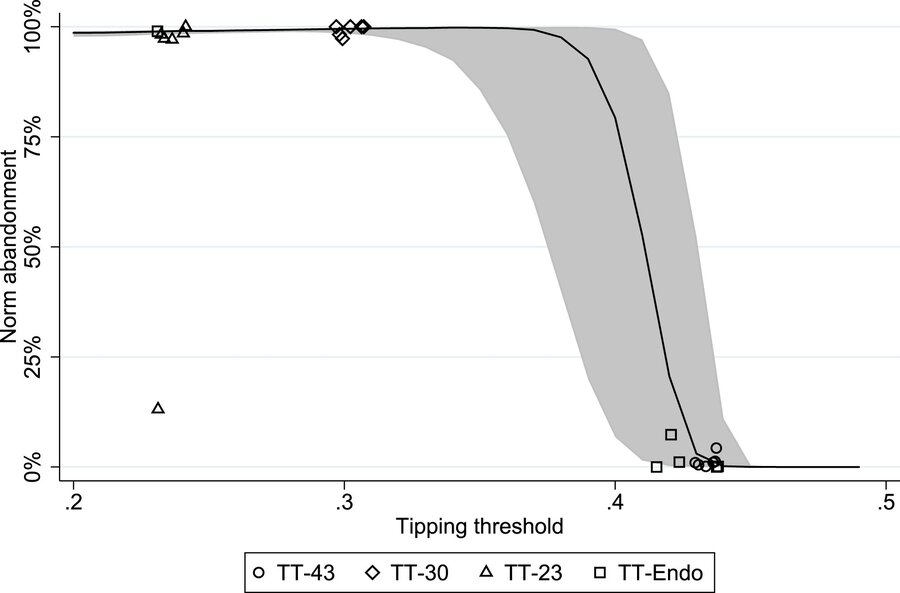
In the recent publication of Proceedings of the National Academy of Sciences, Volume 118, Article number: e2014893118 (2021), James Andreoni, Nikos Nikiforakis and Simon Siegenthaler address the complexities surrounding social tipping—instances when a society transitions from one social norm to another in a short time period. By employing a large-scale laboratory experiment, the researchers explore the conditions that facilitate or hinder the abandonment of detrimental norms, particularly in the context of social welfare. Read here: https://doi.org/10.1073/pnas.2014893118

Norm abandonment as a function of the tipping threshold. The tipping threshold is a critical determinant of the likelihood to observe change. Each marker represents the percentage of subjects in the last five periods that abandoned Blue in a given experimental society. Also shown is the theoretically predicted frequency of norm abandonment (solid line) and 99% CI (shaded area) from 10,000 simulated trials per tipping threshold based on the estimated parameters = 1.73 and (Probit model with society random effects) The theoretical predictions correctly anticipate norm persistence or norm abandonment in 23 of the 24 societies (i.e., in 96% of instances). The model provides a similarly good fit when using a subset of the conditions to estimate μ and σ and use them to perform out-of-sample predictions
This research significantly contributes to our understanding of social dynamics and offers actionable insights for policymakers seeking to promote beneficial norm changes. By revealing the mechanisms underlying social tipping points, the study identifies strategic avenues for addressing critical challenges, including social equity and environmental sustainability.
This study exemplifies C-BID's commitment to advancing scientific knowledge that informs public policy and societal change. Our research emphasizes the relevance of predictive models in understanding human behavior and the importance of fostering environments conducive to positive social transformations, ultimately advancing societal welfare.

University of California

NYU Abu Dhabi

University of Texas at Dallas
